Adenovirus-Inspired Virus-Like-Particles Displaying Melanoma Tumor Antigen Specifically Target Human DC Subsets and Trigger Antigen-Specific Immune Responses
- PMID: 36359404
- PMCID: PMC9687312
- DOI: 10.3390/biomedicines10112881
Adenovirus-Inspired Virus-Like-Particles Displaying Melanoma Tumor Antigen Specifically Target Human DC Subsets and Trigger Antigen-Specific Immune Responses
Abstract
Virus-like particles constitute versatile vectors that can be used as vaccine platforms in many fields from infectiology and more recently to oncology. We previously designed non-infectious adenovirus-inspired 60-mer dodecahedric virus-like particles named ADDomers displaying on their surface either a short epitope or a large tumor/viral antigen. In this work, we explored for the first time the immunogenicity of ADDomers exhibiting melanoma-derived tumor antigen/epitope and their impact on the features of human dendritic cell (DC) subsets. We first demonstrated that ADDomers displaying tumor epitope/antigen elicit a strong immune-stimulating potential of human DC subsets (cDC2s, cDC1s, pDCs), which were able to internalize and cross-present tumor antigen, and subsequently cross-prime antigen-specific T-cell responses. To further limit off-target effects and enhance DC targeting, we engineered specific motifs to de-target epithelial cells and improve DCs' addressing. The improved engineered platform making it possible to display large antigen represents a tool to overcome the barrier of immune allele restriction, broadening the immune response, and paving the way to its potential utilization in humans as an off-the-shelf vaccine.
Keywords: C-type lectin receptors; adenovirus; immunotherapy; melanoma; vaccine platform.
Conflict of interest statement
The authors declare no conflict of interest.
Figures
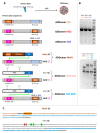
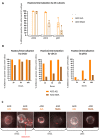
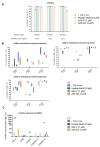
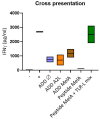
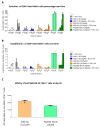
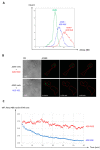
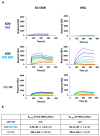


Similar articles
-
Stimulation of the immune system by a tumor antigen-bearing adenovirus-inspired VLP allows control of melanoma growth.Mol Ther Methods Clin Dev. 2022 Dec 7;28:76-89. doi: 10.1016/j.omtm.2022.12.003. eCollection 2023 Mar 9. Mol Ther Methods Clin Dev. 2022. PMID: 36620074 Free PMC article.
-
Unique CLR expression patterns on circulating and tumor-infiltrating DC subsets correlated with clinical outcome in melanoma patients.Front Immunol. 2022 Oct 24;13:1040600. doi: 10.3389/fimmu.2022.1040600. eCollection 2022. Front Immunol. 2022. PMID: 36353633 Free PMC article.
-
BDCA1+ cDC2s, BDCA2+ pDCs and BDCA3+ cDC1s reveal distinct pathophysiologic features and impact on clinical outcomes in melanoma patients.Clin Transl Immunology. 2020 Nov 24;9(11):e1190. doi: 10.1002/cti2.1190. eCollection 2020. Clin Transl Immunology. 2020. PMID: 33282290 Free PMC article.
-
Dendritic cell biology and its role in tumor immunotherapy.J Hematol Oncol. 2020 Aug 3;13(1):107. doi: 10.1186/s13045-020-00939-6. J Hematol Oncol. 2020. PMID: 32746880 Free PMC article. Review.
-
DC-Based Vaccines for Cancer Immunotherapy.Vaccines (Basel). 2020 Nov 26;8(4):706. doi: 10.3390/vaccines8040706. Vaccines (Basel). 2020. PMID: 33255895 Free PMC article. Review.
References
Grants and funding
LinkOut - more resources
Full Text Sources
Miscellaneous

